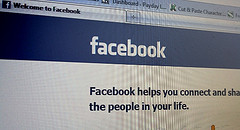 Last week, Facebook launched its Timeline feature for Facebook Pages. That means business and brand Page administrators can choose to switch to the more visual timeline design or stick with the traditional layout. However, Timelines for Facebook Pages will eventually become mandatory, so brands that haven’t switched yet will need to do so by March 30, 2012 when Facebook will automatically update any Pages that still use the old Page format.
Last week, Facebook launched its Timeline feature for Facebook Pages. That means business and brand Page administrators can choose to switch to the more visual timeline design or stick with the traditional layout. However, Timelines for Facebook Pages will eventually become mandatory, so brands that haven’t switched yet will need to do so by March 30, 2012 when Facebook will automatically update any Pages that still use the old Page format.
The trick is figuring out how to leverage the Facebook Timeline to make a brand Facebook Page better than ever. To date, that’s a challenging task.
The good news for brands is that Timelines in Facebook Pages offer a more visual experience that often translates into more sharing and higher engagement. However, there is a cost associated with making a Facebook Page more visual. The page layout has to change. Facebook Pages that use the Timeline feature no longer include tabs across the top of the Page or links in the left sidebar, which brands have been using to drive visitors to specific brand information and experiences. Finding specific content is a bit more difficult with the Timeline layout, and without tabs and links, brands can’t control the landing page that people see when they visit the Page. Those are some definite negatives of Facebook Timelines.
However, Timelines make it easier for brands and businesses to feature important content. At the top of a Facebook Page with the Timeline enabled is a large photo, and beneath it are links to native Facebook apps (such as photos). To the right of those native apps are three image thumbnails that represent application boxes (what would be referred to as tabs in the prior design). Make sure your most important information is easily accessible through those three visible application boxes. Visitors can expand and scroll through additional application boxes to find more content, but those first three boxes that are visible above the fold and with no additional effort required by the user to see them are the most important. You can change your featured content at anytime to match your marketing calendar.
You can also pin one piece of content so it’s featured at the top of the timeline until you unpin it. Again, this is a great way to highlight your most important content and messages. Additionally, the milestone feature in Timelines offers a great way to tell more of your brand story by sharing milestones related to your company, brand, products, and customers.
Another great feature that comes with Timelines is the ability for brands to communicate with Facebook members via private messages. Rather than cluttering the Page Timeline with very specific content that doesn’t add value to the broader audience, brands can communicate directly with people and build deeper relationships with them.
The most important thing brands need to know about the Facebook Page Timeline feature is this — if you want to use Facebook for marketing purposes, you’ll need to switch to the Timeline layout before the month ends. Don’t worry about flipping the switch immediately. Instead, plan your strategy for your Facebook Page Timeline. It’s very different from the traditional Page layout. You’ll have more success with your Page if you make the switch with a great looking (and functioning) Page design rather than simply trying to fit what you’ve been doing on Facebook into the new Timeline layout.
What do you think of Timelines for Facebook Pages? Leave a comment and share your thoughts.
Image: MoneyBlogNewz
Susan Gunelius is the author of 10 marketing, social media, branding, copywriting, and technology books, and she is President & CEO of KeySplash Creative, Inc., a marketing communications company. She also owns Women on Business, an award-wining blog for business women. She is a featured columnist for Entrepreneur.com and Forbes.com, and her marketing-related articles have appeared on websites such as MSNBC.com, BusinessWeek.com, TodayShow.com, and more.
She has over 20 years of experience in the marketing field having spent the first decade of her career directing marketing programs for some of the largest companies in the world, including divisions of AT&T and HSBC. Today, her clients include large and small companies around the world and household brands like Citigroup, Cox Communications, Intuit, and more. Susan is frequently interviewed about marketing and branding by television, radio, print, and online media organizations, and she speaks about these topics at events around the world. You can connect with her on Twitter, Facebook, LinkedIn, or Google+.


